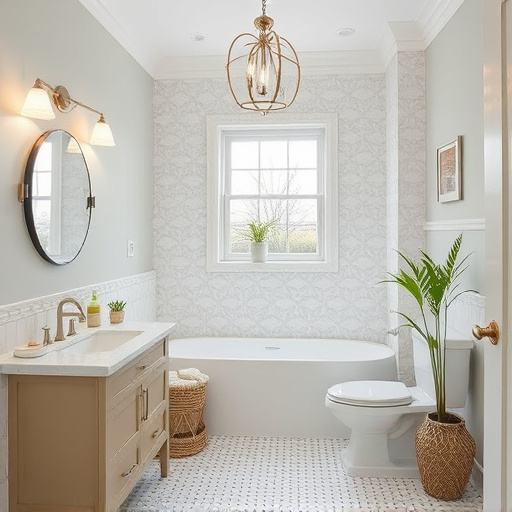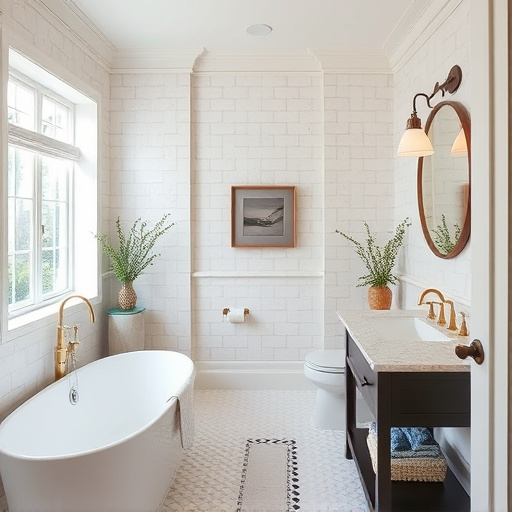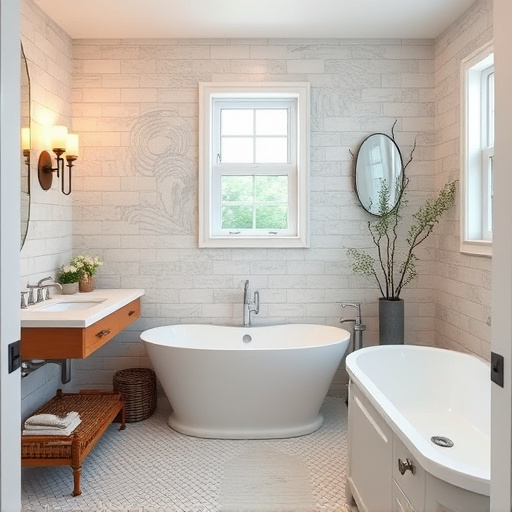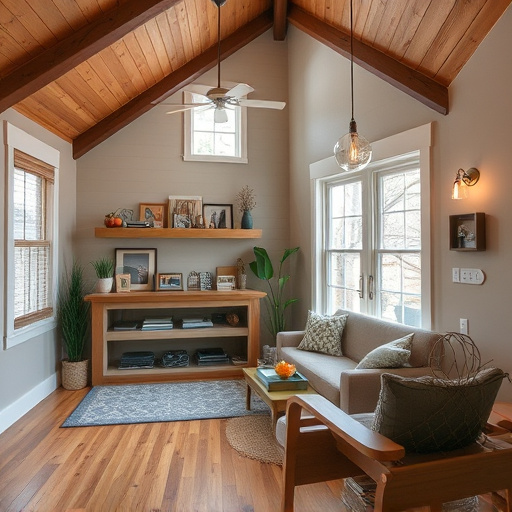Adhering to Americans with Disabilities Act (ADA) standards is paramount in commercial design for both legal adherence and fostering inclusivity. These guidelines encompass requirements like wheelchair access, clear floor space, and contrasting colors for visual impairment assistance. Designers and contractors must incorporate ADA-compliant features such as ramp entrances, braille signage, and high color contrast throughout the project lifecycle. Proactive compliance involves regular audits, staying updated with ADA guidelines, and integrating universal design principles from the beginning to create flexible, adaptable spaces accessible to all, including the elderly and temporarily disabled.
In the realm of commercial design, ensuring accessibility is not just a moral imperative but also a legal necessity. The Americans with Disabilities Act (ADA) sets forth critical standards that all commercial spaces must meet to accommodate individuals with disabilities. This comprehensive article explores the ADA requirements you must adhere to in commercial design, offering insights into understanding these standards, key considerations, best practices, and compliance strategies for creating inclusive and accessible environments.
- Understanding ADA Standards for Commercial Spaces
- Key Considerations in Commercial Design to Meet ADA Requirements
- Best Practices and Compliance Strategies for Accessibility in Commercial Design
Understanding ADA Standards for Commercial Spaces

The ADA (Americans with Disabilities Act) standards are crucial guidelines designed to ensure accessibility and inclusivity in commercial spaces. These regulations cover a wide range of requirements, from wheelchair ramps and accessible parking to clear floor space and contrasting colors for visual impairment assistance. For designers and contractors working on commercial projects, understanding these standards is essential to create functional and compliant spaces.
When engaging in commercial design, whether it’s new construction or existing facilities undergoing home remodeling or additions like home renovations, adhering to ADA guidelines is not just a legal obligation but also a responsible practice. This includes considering the needs of individuals with disabilities during every phase of the project, from initial planning to final interior painting. By doing so, designers contribute to building environments that welcome and serve all members of the community.
Key Considerations in Commercial Design to Meet ADA Requirements

In commercial design projects, adhering to the Americans with Disabilities Act (ADA) requirements is not just a legal necessity but also ensures an inclusive and accessible environment for all users. Key considerations include understanding the specific ADA guidelines for commercial spaces, such as those related to entrance and exit accessibility, clear floor space, and signages. Designers must incorporate features like ramp entrances, wide doorways, and braille signage to cater to individuals with disabilities. Customized home renovations or whole house remodels, if done right, can seamlessly integrate these essential design elements.
Additionally, the use of universal design principles is vital. This approach considers the diverse needs of users ranging from the elderly to those with temporary disabilities. Incorporating features like grab bars in restrooms, lever door handles, and tactile paving not only meets ADA standards but also enhances overall user experience. Reputable home improvement services often emphasize these aspects during their consultations, ensuring that every design decision aligns with accessibility requirements.
Best Practices and Compliance Strategies for Accessibility in Commercial Design

In the realm of commercial design, ensuring accessibility is not merely a legal requirement but also a best practice that enhances the user experience for all. To achieve this, designers and developers must adopt comprehensive strategies that cater to diverse needs. One effective approach is to integrate universal design principles from the initial planning stages, focusing on flexibility and adaptability. This involves creating spaces and interfaces that accommodate users with different abilities, ages, and sensory perceptions without requiring additional aids. For instance, sufficient color contrast, clear signage, and easy-to-use controls in both physical and digital environments are fundamental.
Compliance strategies should also include regular audits and assessments to identify potential barriers. This proactive approach allows for timely addressal of issues related to mobility, manual dexterity, vision, or hearing impairments. Moreover, staying updated on the latest guidelines from organizations like the ADA (Americans with Disabilities Act) is crucial. Incorporating features such as ramped entrances, wide hallways, and accessible restrooms in commercial spaces, along with seamless navigation in home additions or home remodeling projects, including floor replacements, can significantly contribute to creating inclusive environments.
In conclusion, navigating the ADA requirements in commercial design is essential to ensure inclusivity and accessibility for all. By understanding the standards, considering key aspects, adopting best practices, and implementing compliance strategies, designers can create vibrant and bustling spaces that cater to diverse needs. Meeting these requirements not only ensures legal compliance but also fosters a symphony of accessibility, making commercial designs truly revolutionary.













